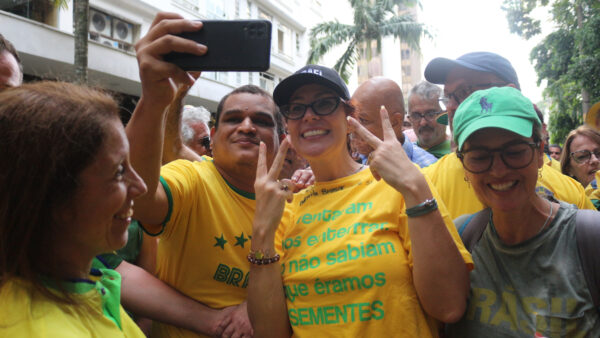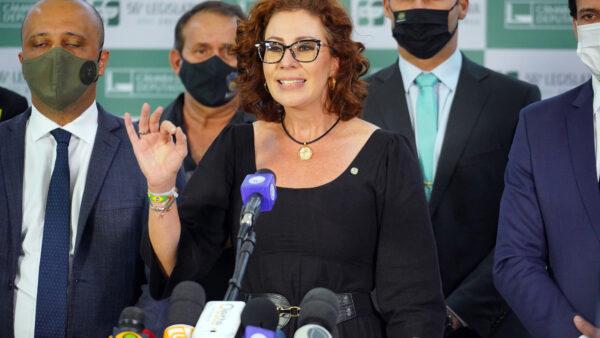When President-elect Jair Bolsonaro walks up the ramp to the Palácio do Planalto on January 1st, he will be facing more than a polarized Brazil with an underperforming economic recovery. The challenges ahead range from the low quality of public education and the return of once-eradicated diseases, to a lack of infrastructure and decreasing confidence in investments and consumption.
To make sense of the veritable Rubik’s cube which is 2018 Brazil, The Brazilian Report has compiled a comprehensive set of data, charts, and maps that synthesize what Brazil’s next president will inherit once in office.
Demographics
Jair Bolsonaro will rule over 208.5 million citizens, mostly concentrated in big cities. According to IBGE, Brazil’s statistics agency, 57 percent of the country’s population live in just 5.7 percent of its towns. That means 118.9 million people are crammed into just 317 of the country’s 5,570 municipalities.
The distribution of Brazilians across the extent of its territory is even more uneven if one considers that 84.3 percent of the people occupy merely 0.63 percent of the country, according to Embrapa, a public agribusiness research company.
On top of the challenge of balancing policies that will benefit both those living in condensed metropoles and others in small, isolated villages, Brazil’s demographic projections also turn the country into a ticking time bomb. IBGE estimates the country’s population will reach 233 million in 2047 and decrease afterwards.

From the economic perspective, this trend means fewer people actively forming part of the labor market and more people retiring and taking a pension. Brazil’s next president will be urged to increase the levels of productivity for the country to take advantage of its young population while it still can. However, the much-awaited pension reform is seen as urgent in the short term.
Fiscal reform
The already high and still increasing level of expenditure on pensions is something that haunts the Ministry of Finance – and basically anyone minimally involved with the country’s economics. Such payments currently account for 11 percent of the country’s Gross Domestic Product (GDP). That alone makes Brazil an outlier.

In other nations with similar spending levels, the elderly make up between 18 and 26 percent of the total population, while in Brazil, inhabitants over the age of 60 account for only 12 percent. What makes this a catastrophe waiting to happen is that if no reform is passed, as more people get older – and the top of the demographic pyramid gets wider than bottom – these payments will represent 30 percent of the country’s GDP by 2030, according to IMF estimates.
The situation becomes even more critical as Brazil has now a public spending cap which limits any increases to the federal budget for the next 20 years. The scenario is one of a fiscal standoff. The majority of economists argue that “some sort of” adjustment is needed to put Brazil back on track. On the other hand, critics claim that such measures will push the burden onto the country’s poorest segments. However, as the Brazilian Institute for Applied Economics (Ipea) said in one of its reports, finding a balance between revenue and expenses is critical:
A good fiscal regime defines the potential growth of a country. Without balanced public accounts, there is no stable macroeconomic environment capable of stimulating production and investment. Under an uncontrolled fiscal environment, the country drowns in a spiral of excessive public indebtedness, high inflation, and recurring confidence crisis.

With no reform, Ipea projects that the organic growth of the current expenses will make it impossible for not only Mr. Bolsonaro, but also Brazil’s future presidents, to comply with the spending cap approved by Congress in 2016.
This may be one of the main challenges the president-elect will have to address at the very beginning of his administration. If no reform is passed, pensions will represent an increasingly large proportion of public expenditure (as indicated by the growth of the light blue bars above) and squeeze other expenses while exceeding the budget limit.
Consultancy firm Tendências estimates that the next president will have to reduce about BRL 20 million to BRL 30 million in costs every year to comply with the new fiscal legislation in the scenario that a minor pension reform is passed.
Federal budget
Mr. Bolsonaro will take office with around BRL 3.5 trillion at his disposal. That may sound like a lot, but the catch is that the president-elect will have very little say on how to allocate that sum.
Half of that amount is already drained by financial expenses, the payment of foreign and domestic debts, plus interest.
And it gets worse. Of the BRL 1.7 trillion remaining to pay for so-called primary expenses, over 90 percent is dedicated to a bill that the government simply must pay. Fábio Klein, a public finance analyst for Tendências, breaks down the numbers to illustrate Brazil’s budgetary dead-end.
“Spending on pensions and wages of public servants, for instance, adds up to nearly 65 percent of this total,” he says, adding that a wide range of social benefits established by law, the budgets of the Legislative and Judiciary branches, and financial compensations for subsidized credit policies make the sum reach nearly BRL 1.6 trillion. “Barely 10 percent is left for everything else. Investments, therefore, take only a small portion of it, which is likely to decrease in the upcoming years”, Mr. Klein estimates.
Currently, federal investments represent a mere 2.7 percent of Brazil’s BRL 1.7 trillion total budget for primary expenditure – or BRL 44 billion in total. When considering where public money goes, financial expenses take up around 60 percent of resources, and nearly 20 percent goes to the pensions system.

Meanwhile, healthcare and education receive just over 3 percent each, national defense, 2 percent, and areas such as agriculture, transportation, public safety, and science and technology get less than 1 percent each. The data below outlines why this is a problem for everyday Brazilians.
Violence in Brazil
Violence is an epidemic in Brazil. The absolute numbers of violent deaths top those in the more populated India and conflict zones such as Syria, Nigeria, and Afghanistan. When analyzing the rate of violent deaths per 100,000 people, Brazil ranks tenth among all the countries that are not under armed conflict.

UN data shows that Brazil’s nearly 60,000 murders in 2015, for instance, equals the amounts registered in the U.S., China, Europe, Northern Africa, Japan, Indonesia, Australia, Canada, and New Zealand, combined.
In 2017, the rate of violent deaths exceeded 30 per 100,000 inhabitants. Intentional homicides are by far the main cause, followed by the killing of women (not necessarily femicides) and deaths by police.

Although Brazil’s legislation limits the right to bear arms, this is still a pressing issue. The number of registered guns is reported to be just over 8 million as of 2017. The Small Arms Survey also that the country has about 9,5 million illegal firearms, placing it in the 8th position globally when it comes to the civil ownership of guns. No wonder the country ranks among those where firearms were used in more than half of the violent killings in 2016, according to the Global Violent Deaths report.

The problem is by no means a new concern for Brazilians. Previous administrations have historically failed to prevent the smuggling of arms across its vast land border, which reaches 17,000 kilometers – or 10,500 miles, over five times the length of the US-Mexico border.
From Paraguay and Argentina by land or from Colombia and Bolivia by planes or boats through the Amazon jungle, the smuggled guns generally end up in the hands of organized crime gangs, fueling drug wars in slums across the country.
According to the president of the Federal Police Federation (Fenapef) Luís Boudens, the number of officers patrolling the borders should be three times higher. In an interview to UOL, he argued that there are too many police officers in desk jobs.
Another challenge which the president-elect will have to address regarding public safety is directly linked the gun problem and the resulting violent deaths. The criminals arrested are packed into the country’s overcrowded jails. Brazil’s prison population increased by eight times over the course of 26 years.
As of June 2016, one figure of the federal report sums up the problem: “occupancy rate: 197.4 percent.” That means Brazil has almost twice as many incarcerated individuals than the total capacity of its jails. On top of the current 368,000 existing places, the country would need to make room for an extra 358,000 men and women sentenced to serve time.

The issue is not only connected to the high level of criminality in the country or the lack of space in prison. The justice system must also take its share of the blame: 40 percent of Brazil’s prison population has yet to have been sentenced. That represents 292,400 prisoners. In the states of Amazonas, Ceara, and Sergipe, the ratio reaches six in every ten.
Sanitation in Brazil
The budgetary constraints have also had a direct impact on the living conditions of Brazilians outside of jail. Earlier this year, the United Nations Children’s Fund (UNICEF) warned that 60 percent of the country’s children – 32.7 million...


 Search
Search






































